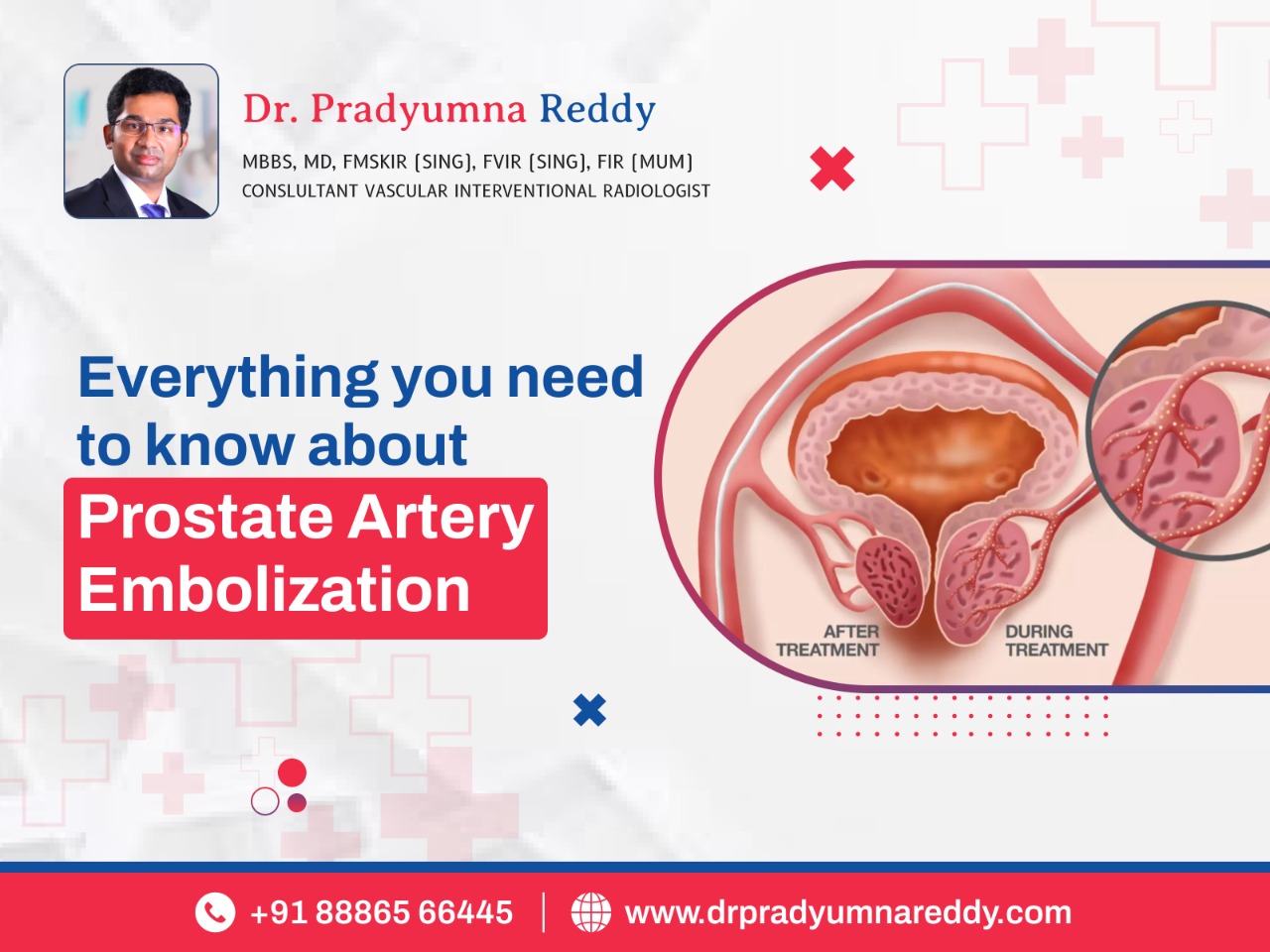Benign Prostatic Hyperplasia (BPH) is a non-cancerous condition where the prostrate gets enlarged. It is one of the most common benign tumours noticed in men and the risk increase as men get older. BPH can lead to lower urinary tract symptoms and affects your quality of life. However, there are several treatment options for this condition including medications, and surgery.
Prostate Artery Embolization (PAE) is the latest and most effective treatment option to reduce the signs of PAH. The process is less-invasive, causes minimal blood loss, and shows very positive results. An interventional radiologist can perform a PAE procedure using X-ray and other imaging methods.
What is Prostate Artery Embolization?
The PAE is a non-invasive treatment option to reduce the symptoms of benign prostatic hyperplasia. Instead of cutting the prostate gland, the radiologist uses catheters to send tiny particles into the blood vessels of the prostate glands. These particles obstruct the blood flow to the enlarged prostate gland and thereby shrink and reduce the size of the prostate gland. How long the procedure takes is based on patient needs, size, and location of arteries to be embolized.
Who Can Undergo Prostate Artery Embolization Procedure?
The interventional radiologist can help you determine if you are suitable for the PAE procedure by considering various factors and through tests.
People with the following can undergo PAE:
- If you have signs of BPH
- If you are willing to maintain your sexual function
- If medications do not work or if they caused side-effects
- If you are not interested or not suitable for surgery
Research has shown that men who had PAE have found improvement and the results lasted for more than ten years.
To decide if the PAE process is right for you, the interventional radiologist will review your medical history. He also performs the following tests:
- Urine test
- Rectal test to know the size of the prostate gland
- MRI and CT scans of the prostate gland
- Prostate-specific antigen (PSA) test may also be conducted to rule out prostate cancer
What Happens During the PAE Procedure?
Before performing the PAE procedure, the doctor suggests to restrain yourself from eating and drinking for a few hours before undergoing the procedure. He may also prescribe you some medications before undergoing PAE.
The PAE procedure will be performed by an interventional radiologist who makes use of x-ray and other imaging methods to view the inside of the prostate gland. The doctor will give you a local anesthesia to numb groin and wrist portion. The doctor inserts a catheter into the artery in the wrist or groin. Then the catheter is positioned towards the blood vessels that supply blood to the prostate gland using an X-ray called fluoroscopy.
Once the catheter is positioned, a contrast dye is injected to clearly see the blood supply to the prostate. Now, an X-ray called an arteriogram is used to inject an embolic agent that contains tiny particles into the artery that supply blood to the prostate. The tiny particles flow along with the blood towards the prostate. This process is continued for several minutes until the blood flow gets blocked. Now, the catheter will be moved to treat the other side of the prostate and the same steps will be repeated. Eventually, the prostate shrinks and your signs get reduced within a few days.
What Happens After the PAE Procedure?
After the procedure is completed, you will be moved to the recovery room for observation and can return to your home after a few hours. Once you return home, you need at least four days to recover. It may take up to 7 or 10 days to get back to your normal life. You might experience discomfort for 6 to 12 hours after the procedure. If you have any pain, you will be given painkillers and the pain reduces within a week.
What Benefits Does PAE Offer?
The PAE offers various benefits over surgery such as the following:
- It is non-invasive and is an outpatient basis procedure
- You can see results within a few days following the procedure
- Lower recovery time
- Fewer chances of sexual side effects and urinary incontinence
- Less to no pain and discomfort during and after the procedure
Get Relieved from the Signs of BPH by Consulting Dr Pradyumna Reddy Today
Dr Pradyumna Reddy has been working as an interventional radiologist for over 6 years in Hyderabad. He has become one of the best interventional radiologists in Hyderabad within a less span of time. He got trained in all basic and advanced radiology methods and became proficient in prostate artery embolization. To know about the procedure, give us a call and we will schedule your appointment.






